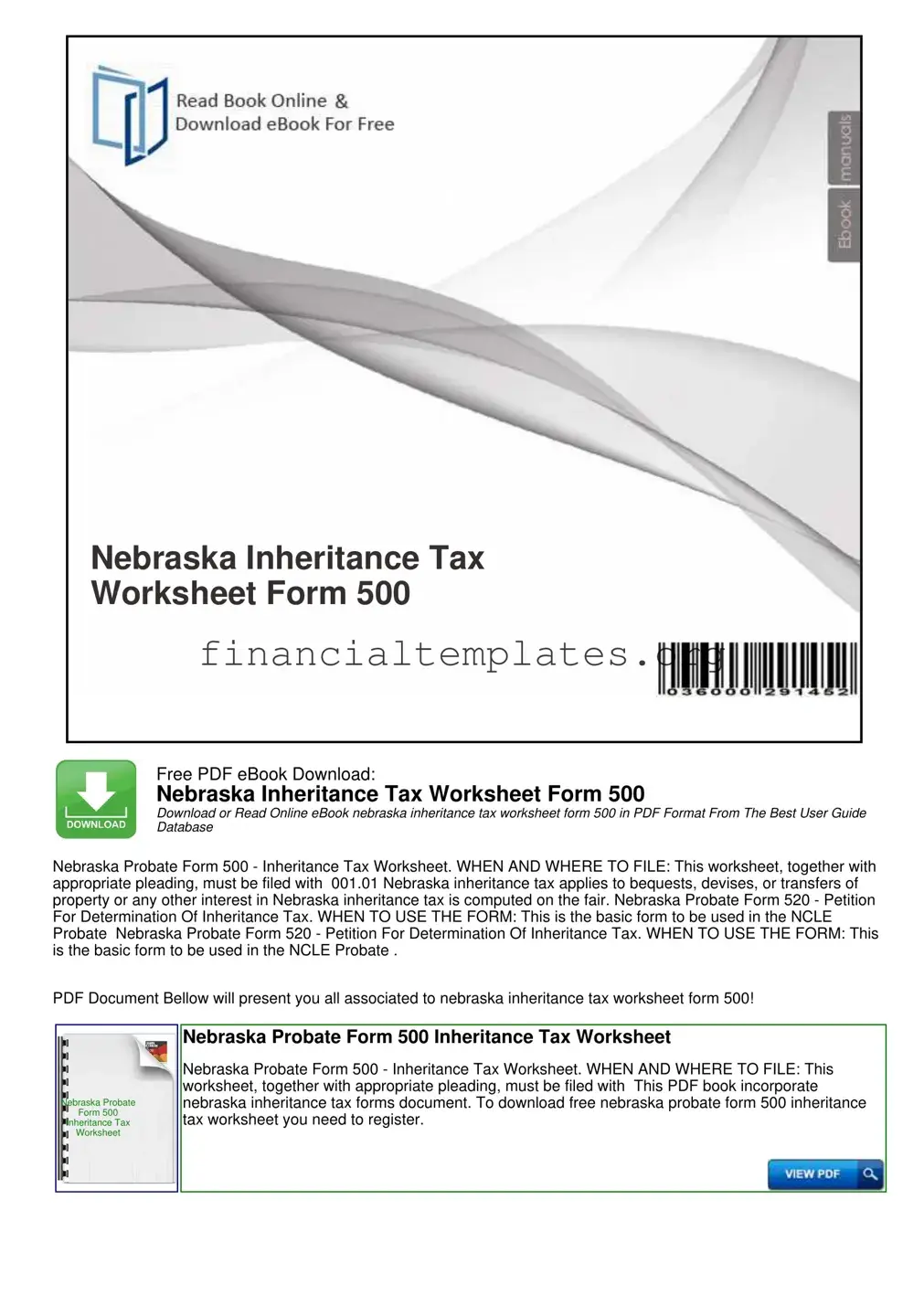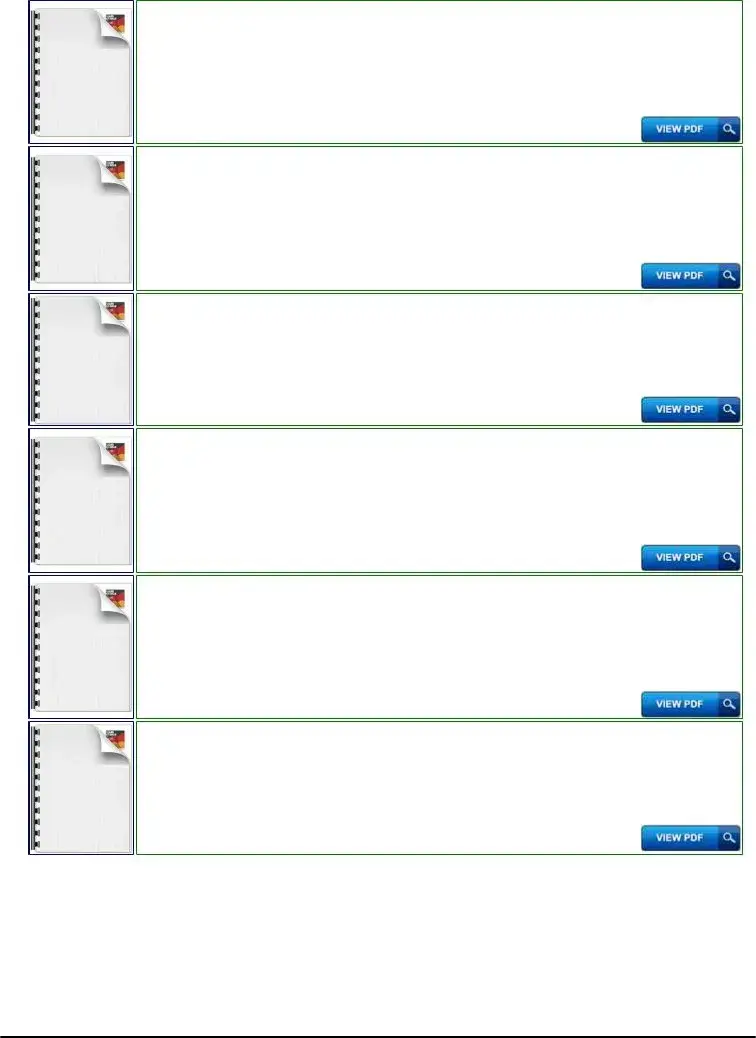The Inheritance Tax Form 706 serves a similar purpose as the Nebraska Inheritance Tax Worksheet Form 500 by requiring detailed information about the decedent's estate to calculate the taxes owed. Both documents ensure appropriate valuation and taxation of an estate according to state and federal laws. This process ensures heirs receive their inheritance with all due taxes accounted for, maintaining compliance with legal requirements.
Comparable to the Inheritance Tax Worksheet, the Gift Tax Return Form 709 involves reporting transfers of value that exceed the annual exclusion limit. While the Inheritance Tax Worksheet deals with assets transferred after death, Form 709 addresses transfers made during the donor’s lifetime. Both forms play crucial roles in the management of wealth transfer taxes, ensuring individuals properly report and potentially pay taxes on significant gifts or inheritances.
The Estate Tax Return, often designated as Form 706 at the federal level, mirrors the functionalities of the Nebraska Inheritance Tax Worksheet by focusing on estates that surpass a certain value threshold. Both documents necessitate a detailed listing of the estate's assets and liabilities to accurately determine tax liabilities. They are pivotal in the process of settling an estate, ensuring that all tax responsibilities are met before distribution to beneficiaries.
State-specific Probate Forms, similar to Nebraska's Inheritance Tax Worksheet, are used during the probate process to evaluate and settle an individual's estate. These forms typically require information about the decedent’s assets, debts, and intended distribution to heirs, ensuring a lawful management and distribution of the estate under state probate laws. Each serves to facilitate the correct calculation and payment of any applicable estate or inheritance taxes.
The Executor’s/Administrator’s Deed forms parallel the Inheritance Tax Worksheet by involving the transfer of property as part of an estate's administration. While the Inheritance Tax Worksheet helps calculate taxes owed on the estate, the Executor's/Administrator’s Deed is critical for legally transferring titled property from the decedent to the beneficiary, highlighting the procedural aspects of estate management.
The Trust Income Tax Return Form 1041, akin to the Inheritance Tax Worksheet, deals with taxation related to estates, specifically trusts. Both forms require detailed financial information to assess the tax responsibilities of estates or trusts, ensuring that income generated by these entities is reported and taxed accordingly. This form is essential for trustees to comply with federal tax obligations.
Similar to the Inheritance Tax Worksheet, the Change of Beneficiary Form is used in estate planning and the administration of assets, specifically for life insurance or retirement accounts. It doesn't deal directly with tax calculation but is crucial in specifying beneficiaries and ensuring assets bypass probate and go directly to named individuals, potentially affecting the estate's value and related tax implications.
The Surviving Spouse’s Property Valuation Form, akin to the Inheritance Tax Worksheet, assists in determining tax liabilities but focuses on valuation adjustments for property transfers to a surviving spouse. Both forms serve to accurately evaluate assets within an estate for tax purposes, ensuring that tax calculations are based on fair market values and comply with tax law provisions specific to surviving spouses.
The Lifetime Learning Credit Form 8863, while primarily for educational tax credits, shares a similarity with the Inheritance Tax Worksheet in the aspect of tax benefits. The Inheritance Tax Worksheet calculates taxes due on an estate, potentially reducing the taxable estate through deductions like debts and administration expenses, while Form 8863 calculates credits that reduce tax liability, demonstrating the broader principle of tax minimization through lawful deductions or credits.







